How to talk about benefits to recruit effectively?
In today’s post, we will focus on leveraging the potential of employee benefits during recruitment processes. We will discuss how to effectively communicate their value, emphasizing that they are not just an add-on, but also have a financial dimension and are linked to company values. Thanks to Elevato’s invitation, our Head of People & Culture – Nicole Tomanek prepared a presentation, which she discussed with Jack Krajewski during the webinar “How to talk about benefits to recruit effectively?” She considered three key segments on the issue.

Here are five candidate perspectives on employee benefits. The first group are candidates for whom benefits are a key element in deciding whether to accept a job offer. These are usually people who have subordinated their lifestyle and that of their family to benefits and a potential job change must guarantee them a benefit. The second category are insecure candidates, for whom highlighting a particular benefit can tip the balance in favor of a particular company, even with a similar salary and range of benefits. The third group, on the other hand, are candidates who learn about a company through benefit-related recommendations, which underscores the importance of employer branding through attractive benefits. The fourth type is loyal candidates who stay with the company because of the tailored benefits, which outweighs any increase in salary. The last category is materialistic candidates who prefer money, so in this case we recommend emphasizing the financial value of benefits, showing that they are an important element with monetary value, not just a non-wage add-on.
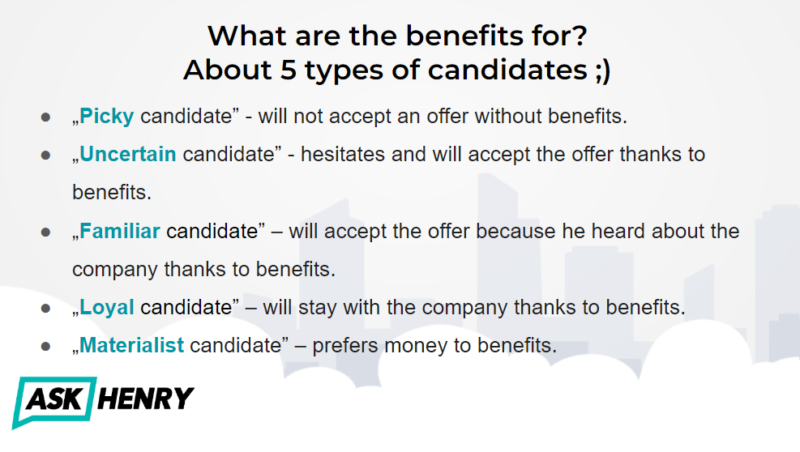
Data from last year shows that as many as 75% of employees choose to stay with a company because of the benefits. Therefore, when someone says it’s just an extra cost or a fad, it’s important to point out the significant impact benefits have on reducing turnover and recruitment costs. It is a fact that 69% of employees choose an employer mainly because of the benefits offered. However, the sad reality is that only 42% of companies say they are interested in improving their benefit program to better meet the needs of employees. It is therefore worth noting the importance of benefits for employee retention and company competitiveness in the market.
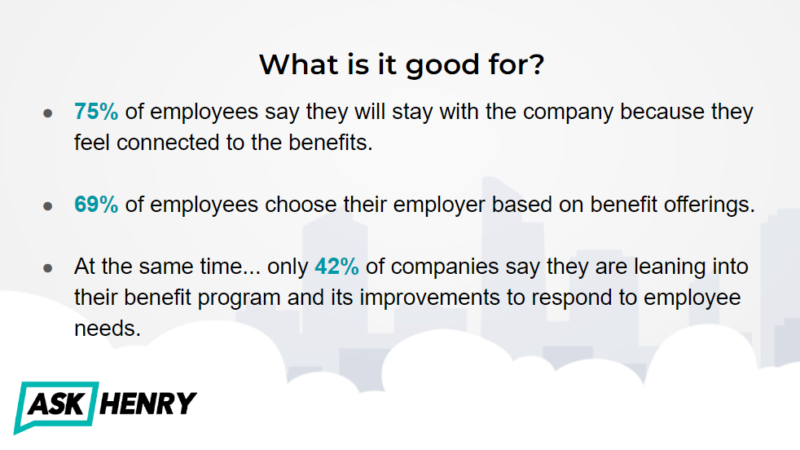
The research clearly shows that job offers with benefits attract a significantly higher number of applications. In the context of those already employed at the company, benefits contribute to a lower turnover rate, confirming their significant role in team retention. However, that’s not all – increased productivity and improved workplace atmosphere are other benefits of introducing benefits, which makes it worth noting their importance not only in the context of recruitment, but also in shaping a positive work environment.

What does the Roman empire have in common with Henry Ford?
The Roman Empire introduced the first-ever retirement benefit – Caesar, fearing rebellion, decided to pay former soldiers “severance pay” and “retirement benefits” for maintaining loyalty, which historically was the first type of benefit. Henry Ford, in the era of industrialism, also innovated in the area of benefits, reducing working hours from 48 to 40 hours, which brought increased productivity. It is worth noting that benefits play a key role not only in improving the atmosphere, but also in work efficiency. Examples from history, such as the Roman empire or the Henry Ford era, prove that by taking care of employees’ well-being, organizations can achieve better productive results. Thus, benefits are not just an add-on, but an important factor in employee productivity and satisfaction. Henry Ford’s decision was positive in its effects – it turned out that a shorter-working employee is more effective than one who spends long hours at work with understaffing.
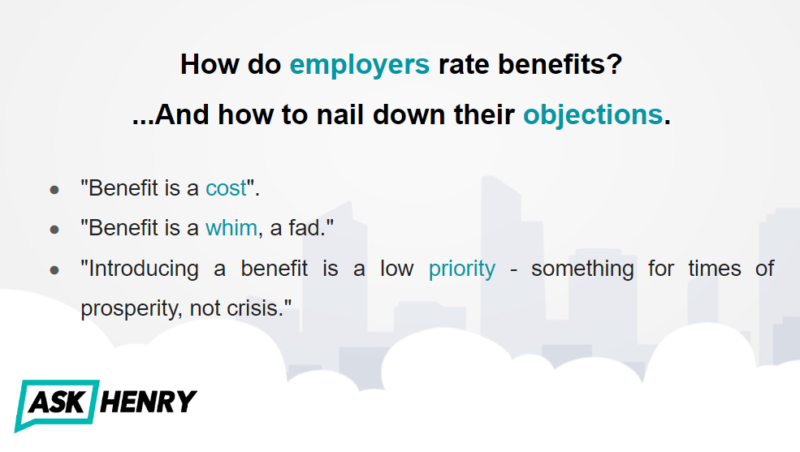
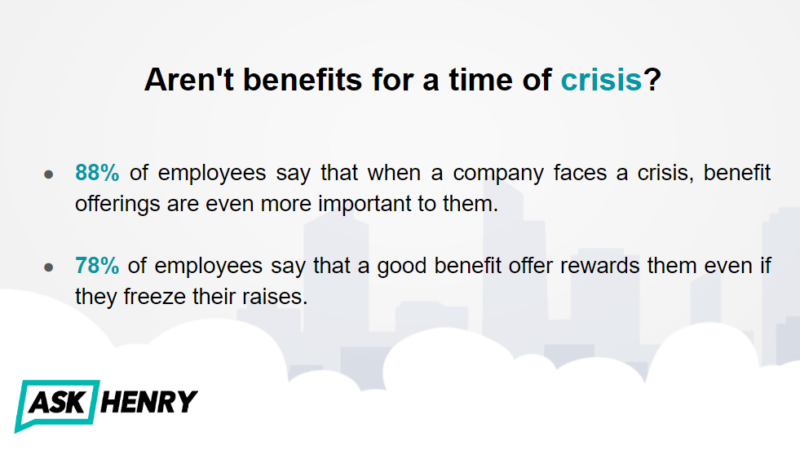
In the face of the COVID-19 pandemic, employees began to appreciate benefits. After the first wave of the virus subsided, there was a noticeable increase in interest in preventive health care, including not only traditional medical services, but also more unusual benefits such as psychological care. Benefits including a wide range of concierge services to support the organization of daily living or well-being are also attracting increasing attention. However, recent data shows that 26% of employees are more likely to accept a job offer if it includes elements of wellbeing benefits. Significantly, more than half of employees already recognize that health programs and concierge-type benefits are necessary to consider a new job offer. This could be a new approach to negotiating with management, where health aspects and support in daily life become key factors in determining the choice of a new workplace.

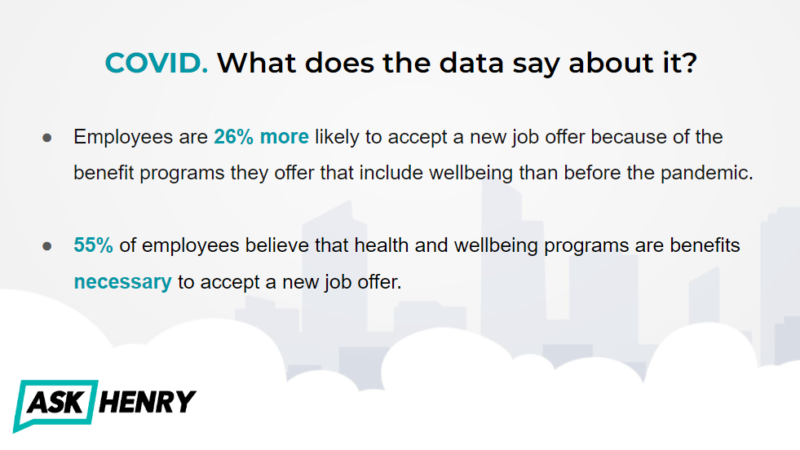
When building benefit offerings for employees, there are three key categories worth noting. First, there are core benefits, or “core benefits” – which include traditional pension plans and health insurance. Statistics show that focusing solely on these core benefits can limit the potential for attracting employees. The second category, known as “values-based benefits,” or wellbeing benefits, opens up a new area tied to company values. These are the benefits that allow you to stand out in the market, taking into account the individual nature of your organization. The last category is “remote work benefits,” which are becoming increasingly important in the era of hybrid work. Companies offering support for remote workers, such as subsidies for coworking space or home office equipment, are gaining traction. It is crucial to avoid mistakes when building benefit offerings, such as blindly following trends without considering their compatibility with company values. Studying the needs of the target group, regularly reviewing the usability of benefits and diversity of offerings are key elements of an effective benefit strategy that will attract and retain talent.

Check out the usefulness of an interactive matrix that shows the variation in benefit preferences across different groups, taking into account industries, organization size, gender and hierarchy level.
CLICK ON THE IMAGE BELOW TO GO TO THE MATRIX
When considering what an attractive benefit really is, let’s go back to the historical context, where benefits were closely linked to the workplace. Traditionally, employers focused on workplace equipment, e.g. ergonomic desk, adjustable chair. However, this perspective has now changed – it has been recognized that work life and private life are intertwined in such a way that the focus cannot be solely on the employee’s comfort while at work. An attractive benefit today is one that improves the overall quality of life, not just in a professional context. Companies at the forefront of this benefit field are targeting areas related to the employee’s entire life, including care for the employee’s family, pets or passions. Another key aspect is that benefits are tailored to individual employees’ needs and can be used by entire families, which has a positive impact on employee loyalty and minimizes the risk of layoffs.
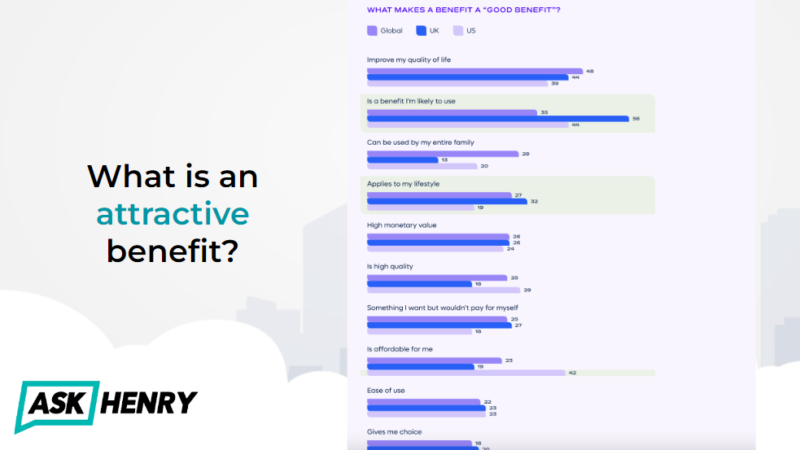
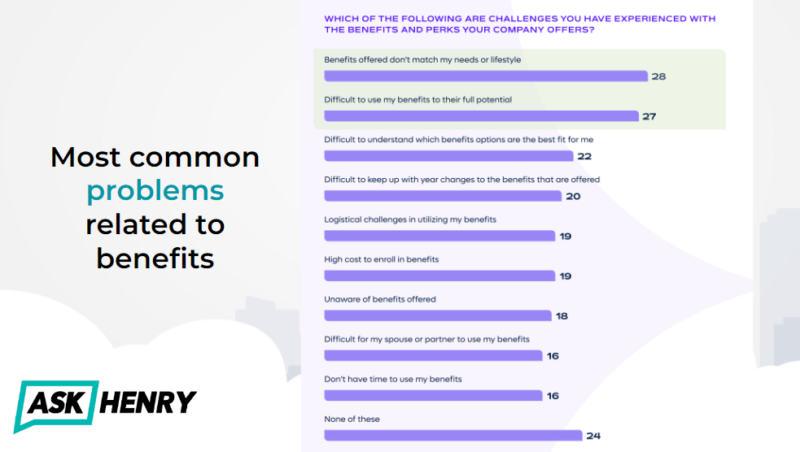
When introducing benefits into a job offer, it is crucial to fully realize their potential by focusing on effective communication. No matter how good a benefit offer is, if it is not prominently displayed in job offers, interviews with candidates or on the company’s website, it may be seen as standard or be overlooked. When introducing benefits, common mistakes include hiding them and mentioning them only in the offer, instead of creating a dedicated segment on the website with a clear narrative linked to the company’s values. Effective communication is the key to highlighting the value of benefits and attracting the attention of potential employees.
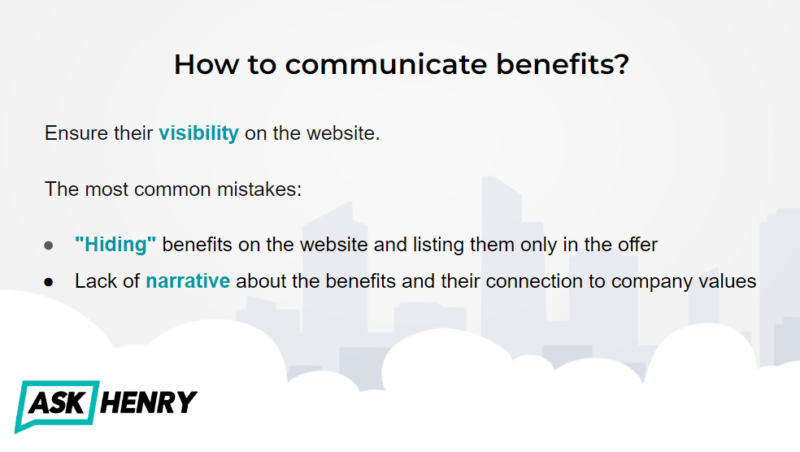
In the context of benefit communication during recruitment, a common mistake is the failure to highlight the added value that benefits bring. The classic approach focuses on salary information, often overlooking important fringe benefits. We recommend discussing the availability of benefits, which will help candidates understand that these are real non-wage benefits. Also often overlooked is the connection of benefits to company values and organizational culture. Recruiters should take a conscious approach to communicating benefits, including them in interviews, and ensure their visibility on the company’s website so that potential employees can better understand how these benefits fit into the overall job offer.
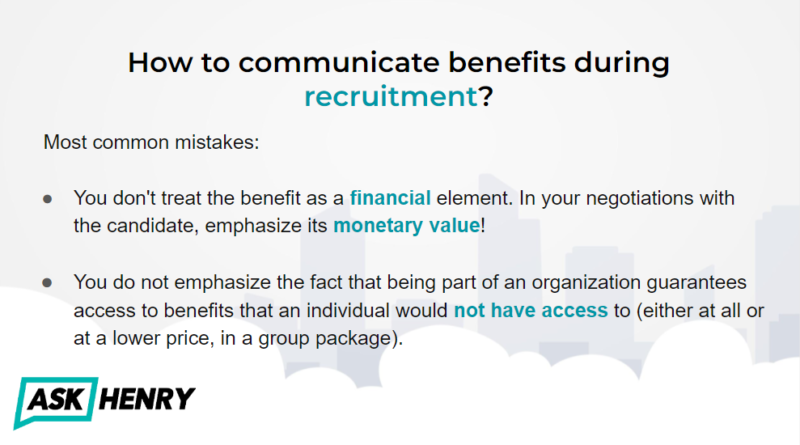

Sources and useful links:
The Rise of the Whole Employee: 20 Years of Change in Employer-Employee Dynamics
https://www.metlife.com/content/dam/metlifecom/us/noindex/pdf/ebts2022/MetLife_EBTS_2022.pdf
● 17 Amazing Job Satisfaction Statistics to Know in 2023
https://leftronic.com/blog/job-satisfaction-statistics/
● Employee Benefits Communication Success Strategies
https://talentculture.com/blog/employee-benefits-communication-successstrategies
